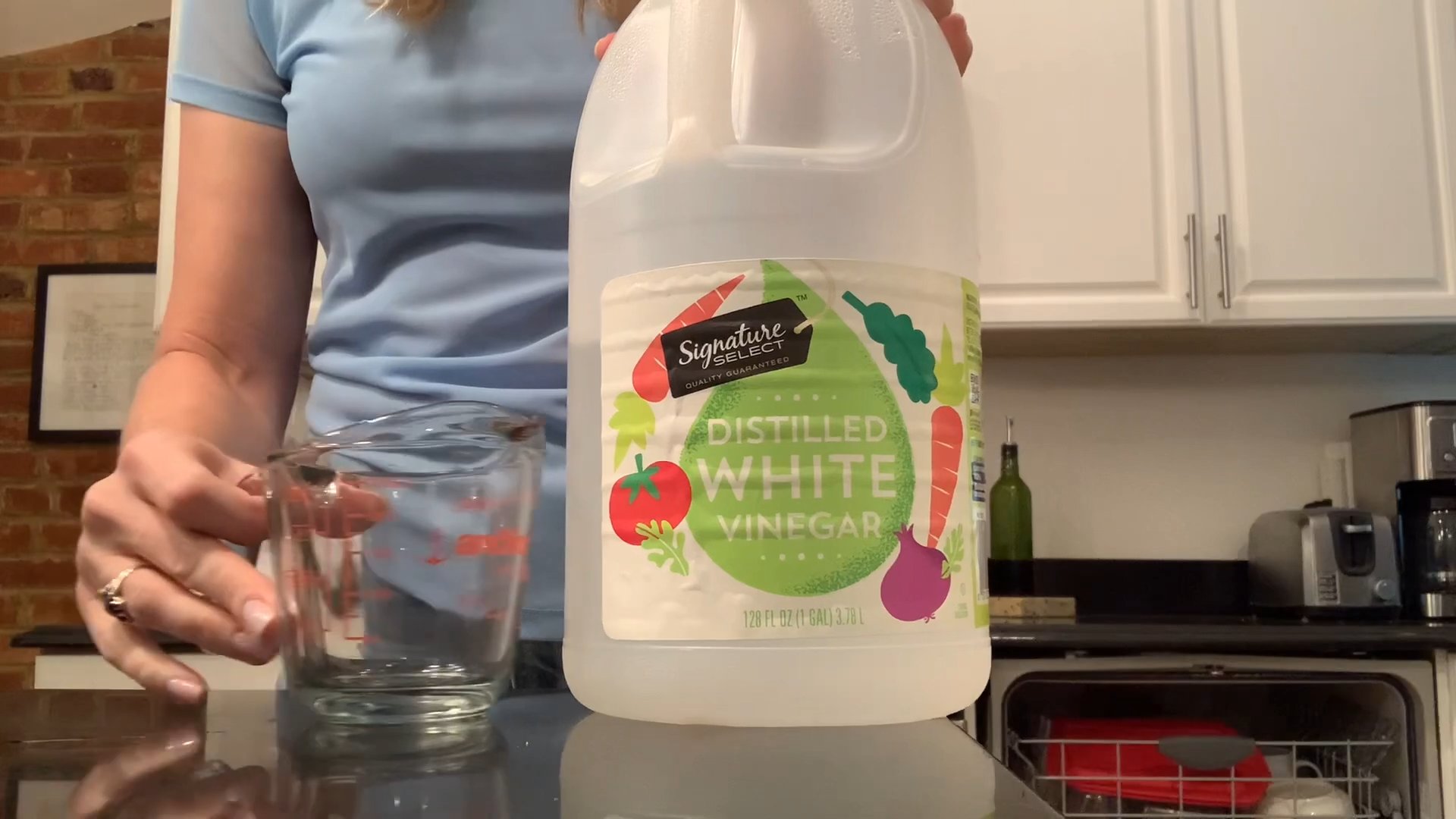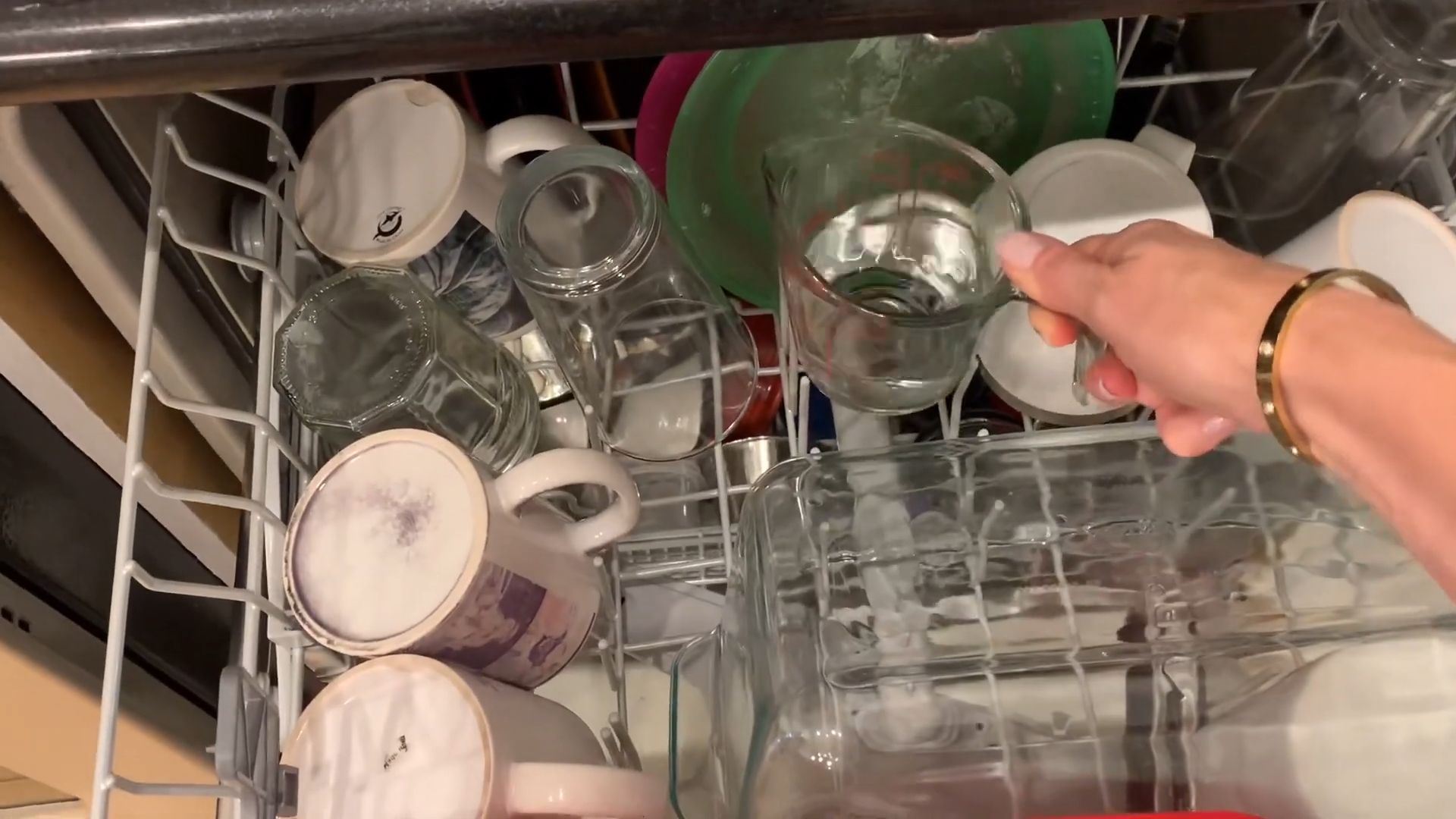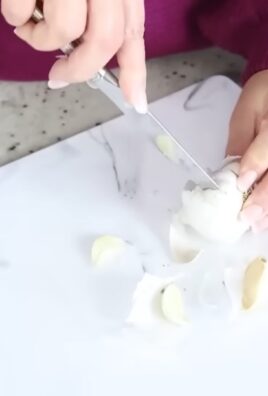DIY white vinegar recipes are about to become your new best friend in the garden! Forget those expensive, chemical-laden solutions – we’re diving headfirst into the world of natural, effective, and budget-friendly gardening hacks using the humble white vinegar.
For generations, resourceful gardeners have whispered secrets about vinegar’s amazing abilities. From ancient Roman farmers using it to amend soil to modern-day homesteaders relying on it for weed control, vinegar has a rich history as a natural gardening aid. It’s a testament to the power of simple, time-tested solutions.
Why should you embrace these DIY white vinegar recipes? Because let’s face it, gardening can be tough! Weeds pop up overnight, pests seem to have a personal vendetta against your prize-winning tomatoes, and sometimes, you just need a little boost to get your plants thriving. These recipes offer a safe, effective, and affordable way to tackle common gardening challenges without harming the environment or breaking the bank. I’m excited to share these simple yet powerful solutions that will transform your gardening experience. Get ready to unlock the full potential of your garden with the magic of white vinegar!

DIY Cleaning Powerhouse: Unleashing the Magic of White Vinegar
Hey there, fellow DIY enthusiasts! I’m so excited to share some of my favorite ways to use white vinegar for cleaning. Seriously, this stuff is a game-changer. It’s cheap, effective, and way better for the environment than a lot of those harsh chemicals you find in store-bought cleaners. Let’s dive into some amazing DIY recipes that will leave your home sparkling!
General Cleaning Tips with White Vinegar
Before we get into the specific recipes, let’s cover some ground rules for using white vinegar effectively:
* Always dilute it: Straight vinegar can be too acidic for some surfaces. I usually start with a 50/50 mix of vinegar and water.
* Test in an inconspicuous area: Before you go wild, test your vinegar solution on a small, hidden spot to make sure it doesn’t damage the surface.
* Avoid certain surfaces: Don’t use vinegar on marble, granite, or other natural stone surfaces, as it can etch them. Also, avoid using it on waxed furniture.
* Embrace essential oils: Vinegar has a distinct smell, but you can easily mask it with a few drops of your favorite essential oils. Lemon, lavender, and tea tree oil are great choices.
* Use a spray bottle: A spray bottle makes application easy and efficient.
DIY All-Purpose Cleaner
This is my go-to cleaner for almost everything! It’s simple, effective, and smells amazing (thanks to the essential oils!).
You’ll need:
* 1 cup white vinegar
* 1 cup water
* 10-20 drops of your favorite essential oil (I love lemon or lavender)
* Spray bottle
Instructions:
1. Mix it up: In your spray bottle, combine the white vinegar and water.
2. Add the scent: Add your essential oils. The amount you use depends on how strong you want the scent to be. I usually start with 10 drops and add more if needed.
3. Shake it well: Give the bottle a good shake to combine everything.
4. Spray and wipe: Spray the solution onto the surface you want to clean and wipe it down with a clean cloth.
I use this on countertops (except granite!), sinks, appliances, and even mirrors. It’s a fantastic all-around cleaner.
DIY Glass and Mirror Cleaner
Say goodbye to streaks! This vinegar-based glass cleaner leaves your windows and mirrors sparkling clean.
You’ll need:
* 1/4 cup white vinegar
* 2 cups water
* Spray bottle
* Microfiber cloth
Instructions:
1. Combine ingredients: In your spray bottle, mix the white vinegar and water.
2. Spray lightly: Lightly spray the solution onto the glass or mirror.
3. Wipe with microfiber cloth: Wipe the surface with a clean, dry microfiber cloth. The microfiber cloth is key to preventing streaks.
This cleaner works wonders on windows, mirrors, and even shower doors.
DIY Shower Cleaner
Tired of soap scum? This shower cleaner will help you keep your shower sparkling without harsh chemicals.
You’ll need:
* 1 cup white vinegar
* 1 cup water
* Spray bottle
Instructions:
1. Mix the solution: Combine the white vinegar and water in your spray bottle.
2. Spray the shower: After each shower, spray the solution onto the walls and door.
3. Let it sit: Let the solution sit for a few minutes.
4. Rinse (optional): You can rinse the shower with water, but it’s not always necessary. The vinegar smell will dissipate quickly.
For tougher soap scum buildup, you can heat the vinegar in the microwave for a minute before mixing it with the water. Be careful when handling hot vinegar!
DIY Toilet Bowl Cleaner
Keep your toilet bowl clean and fresh with this simple vinegar solution.
You’ll need:
* 1 cup white vinegar
* Toilet brush
Instructions:
1. Pour in vinegar: Pour the white vinegar into the toilet bowl.
2. Let it sit: Let the vinegar sit for at least 30 minutes, or even overnight for tougher stains.
3. Scrub and flush: Scrub the bowl with a toilet brush and then flush.
For extra cleaning power, you can add 1/2 cup of baking soda to the bowl before pouring in the vinegar. Be prepared for some fizzing!
DIY Drain Cleaner
Unclog your drains naturally with this vinegar and baking soda combo.
You’ll need:
* 1/2 cup baking soda
* 1 cup white vinegar
* Hot water
Instructions:
1. Pour in baking soda: Pour the baking soda down the drain.
2. Add vinegar: Pour the white vinegar down the drain after the baking soda.
3. Let it fizz: Let the mixture fizz for 30 minutes.
4. Flush with hot water: Flush the drain with hot water for several minutes.
This method works best for minor clogs. For more severe clogs, you may need to repeat the process or use a drain snake.
DIY Laundry Booster
Vinegar can also be used in your laundry to boost cleaning power and soften fabrics.
You’ll need:
* 1/2 cup white vinegar
Instructions:
1. Add to rinse cycle: Add 1/2 cup of white vinegar to your washing machine’s rinse cycle.
Vinegar helps to remove soap residue, soften fabrics, and brighten colors. Don’t worry, your clothes won’t smell like vinegar! The smell dissipates during the drying process.
DIY Microwave Cleaner
Cleaning the microwave is a breeze with vinegar!
You’ll need:
* 1/2 cup white vinegar
* 1/2 cup water
* Microwave-safe bowl
Instructions:
1. Combine ingredients: Combine the white vinegar and water in a microwave-safe bowl.
2. Microwave for 5 minutes: Microwave the mixture on high for 5 minutes.
3. Let it sit: Let the bowl sit in the microwave for another 5 minutes. The steam will loosen any stuck-on food.
4. Wipe clean: Carefully remove the bowl and wipe down the inside of the microwave with a clean cloth.
This method makes it so easy to wipe away all the grime and splatters in your microwave.
DIY Coffee Maker Cleaner
Keep your coffee maker running smoothly with a vinegar cleaning.
You’ll need:
* White vinegar
* Water
Instructions:
1. Fill the reservoir: Fill the coffee maker’s reservoir with a 50/50 mixture of white vinegar and water.
2. Brew halfway: Brew the mixture halfway through a normal brewing cycle.
3. Let it sit: Turn off the coffee maker and let the vinegar solution sit in the reservoir for 30 minutes.
4. Finish brewing: Finish brewing the remaining vinegar solution.
5. Rinse with water: Run two full cycles of fresh water through the coffee maker to rinse away any remaining vinegar.
This will remove mineral buildup and keep your coffee tasting fresh.
DIY Weed Killer
Vinegar can even be used to kill weeds in your garden!
You’ll need:
* White vinegar
* Spray bottle
Instructions:
1. Pour vinegar into spray bottle: Pour undiluted white vinegar into a spray bottle.
2. Spray weeds: Spray the vinegar directly onto the weeds, being careful not to spray any plants you want to keep.
3. Repeat as needed: Repeat the application as needed until the weeds are dead.
This works best on young weeds. Be aware that vinegar can also kill grass, so use it carefully.
DIY Cutting Board Sanitizer
Keep your cutting boards clean and sanitized with vinegar.
You’ll need:
* White vinegar
* Clean cloth
Instructions:
1. Wipe down the board: After washing your cutting board with soap and water, wipe it down with white vinegar.
2. Let it air dry: Let the vinegar air dry.
Vinegar is a natural disinfectant and will help to kill bacteria on your cutting board.
DIY Humidifier Cleaner
Prevent mold and bacteria growth in your humidifier with regular vinegar cleaning.
You’ll need:
* White vinegar
* Water
Instructions:
1. Empty the humidifier: Empty the humidifier and rinse it with water.
2. Fill with vinegar: Fill the humidifier with white vinegar.
3. Let it sit: Let the vinegar

Conclusion
So, there you have it! Ditching those expensive, chemical-laden cleaners and embracing the power of DIY white vinegar recipes is not just a trend; it’s a smart, sustainable, and surprisingly effective way to keep your home sparkling. From tackling stubborn grime in the bathroom to revitalizing your laundry, the versatility of white vinegar is truly remarkable.
Why is this a must-try? Because it’s economical. You’re likely already buying white vinegar for cooking, so you’re essentially unlocking a treasure trove of cleaning power with a product you already have on hand. It’s also environmentally friendly. Say goodbye to harsh chemicals polluting your home and waterways. White vinegar is biodegradable and a much gentler option for our planet. And finally, it’s incredibly effective. Don’t let the simple nature of vinegar fool you; its acidity is a formidable foe against dirt, grease, and bacteria.
But the beauty of DIY lies in its adaptability. Feel free to experiment with different essential oil combinations to create your signature scent. Lavender and tea tree oil are excellent choices for their antibacterial properties and calming aromas. For tougher stains, consider adding a tablespoon of baking soda to your vinegar solution for an extra boost of cleaning power. You can even infuse your vinegar with citrus peels for a naturally fragrant and potent cleaner. Think lemon-infused vinegar for cutting through grease in the kitchen or orange-infused vinegar for a refreshing bathroom spray.
Don’t be afraid to get creative and tailor these DIY white vinegar recipes to your specific needs and preferences. The possibilities are endless!
We’re confident that once you experience the cleaning prowess and cost-effectiveness of these DIY solutions, you’ll never go back to store-bought cleaners. It’s a win-win for your wallet, your health, and the environment.
So, what are you waiting for? Grab that bottle of white vinegar and start experimenting! We’re eager to hear about your experiences. Share your favorite DIY white vinegar recipes and cleaning tips in the comments below. Let’s build a community of eco-conscious cleaners and discover even more ways to harness the power of this amazing natural ingredient. We encourage you to share your before and after photos, your favorite scent combinations, and any unique applications you’ve discovered. Your insights could inspire others to make the switch and embrace a cleaner, greener lifestyle. Let’s revolutionize the way we clean, one bottle of white vinegar at a time!
Frequently Asked Questions (FAQs)
Is white vinegar safe to use on all surfaces?
While white vinegar is a fantastic cleaner, it’s not suitable for all surfaces. Avoid using it on natural stone surfaces like marble, granite, and limestone, as the acidity can etch and damage them. It’s also best to avoid using it on waxed furniture, as it can strip the wax finish. Always test a small, inconspicuous area before applying vinegar to a larger surface, especially if you’re unsure about its compatibility. For delicate surfaces, dilute the vinegar with more water to reduce its acidity. When in doubt, consult the manufacturer’s instructions for the specific surface you’re cleaning.
What is the best type of white vinegar to use for cleaning?
The best type of white vinegar for cleaning is distilled white vinegar. It typically has an acidity level of around 5%, which is effective for cleaning without being overly harsh. Avoid using flavored vinegars, such as apple cider vinegar or balsamic vinegar, as they may contain sugars or other additives that can leave a sticky residue. Distilled white vinegar is readily available in most grocery stores and is an affordable and versatile cleaning solution.
How do I get rid of the vinegar smell after cleaning?
The vinegar smell can be a deterrent for some, but it dissipates quickly. To minimize the odor, ensure proper ventilation by opening windows or using a fan. You can also add a few drops of your favorite essential oil to your vinegar solution to mask the smell. Citrus essential oils, like lemon or orange, are particularly effective at neutralizing the vinegar scent. Another trick is to wipe down surfaces with a damp cloth after cleaning with vinegar to remove any lingering residue. The smell typically disappears within an hour or two.
Can I mix white vinegar with bleach?
Never mix white vinegar with bleach! This combination creates chlorine gas, which is highly toxic and can cause serious respiratory problems, burns, and even death. Always use vinegar and bleach separately and rinse surfaces thoroughly between applications. Safety should always be your top priority when cleaning.
How can I use white vinegar to clean my washing machine?
White vinegar is an excellent natural cleaner for washing machines. To clean your washing machine, pour two cups of white vinegar into the detergent dispenser and run a hot, empty cycle. This will help to remove soap scum, mineral deposits, and mildew buildup. For a deeper clean, you can also add a half-cup of baking soda directly into the drum of the washing machine. Repeat this process every month or two to keep your washing machine fresh and clean.
Can I use white vinegar to unclog drains?
Yes, white vinegar can be used to unclog drains. Pour about a cup of baking soda down the drain, followed by a cup of white vinegar. Let it fizz for about 30 minutes, then flush with hot water. The chemical reaction between the baking soda and vinegar helps to break down grease and grime that are clogging the drain. For stubborn clogs, you may need to repeat the process or use a plunger.
How do I make a DIY all-purpose cleaner with white vinegar?
Creating an all-purpose cleaner with white vinegar is simple. In a spray bottle, mix equal parts white vinegar and water. Add a few drops of your favorite essential oil for fragrance, such as lavender, lemon, or tea tree oil. Shake well before each use. This all-purpose cleaner can be used on a variety of surfaces, including countertops, sinks, and floors. Always test a small, inconspicuous area first to ensure compatibility.
Is white vinegar effective at killing mold?
Yes, white vinegar is effective at killing mold. Spray undiluted white vinegar onto the moldy surface and let it sit for about an hour. Then, scrub the area with a brush and wipe clean with a damp cloth. Vinegar’s acidity helps to kill mold spores and prevent them from returning. For porous surfaces, you may need to repeat the process several times. Ensure proper ventilation when cleaning mold to avoid inhaling spores.
How can I use white vinegar to clean my microwave?
To clean your microwave with white vinegar, mix equal parts white vinegar and water in a microwave-safe bowl. Microwave the mixture for about 5 minutes, or until the solution boils and the microwave is filled with steam. Let the bowl sit in the microwave for another 5 minutes to allow the steam to loosen any stuck-on food particles. Then, carefully remove the bowl and wipe down the inside of the microwave with a clean cloth. The steam and vinegar will make it easy to remove even the most stubborn splatters.
Can I use white vinegar to remove hard water stains?
Absolutely! White vinegar is excellent for removing hard water stains. Soak a cloth or sponge in white vinegar and apply it to the affected area. Let it sit for about 15-20 minutes to allow the vinegar to dissolve the mineral deposits. Then, scrub the area with a brush or sponge and rinse with water. For tougher stains, you may need to repeat the process or use a stronger concentration of vinegar. White vinegar can be used to remove hard water stains from faucets, showerheads, and shower doors.





Leave a Comment